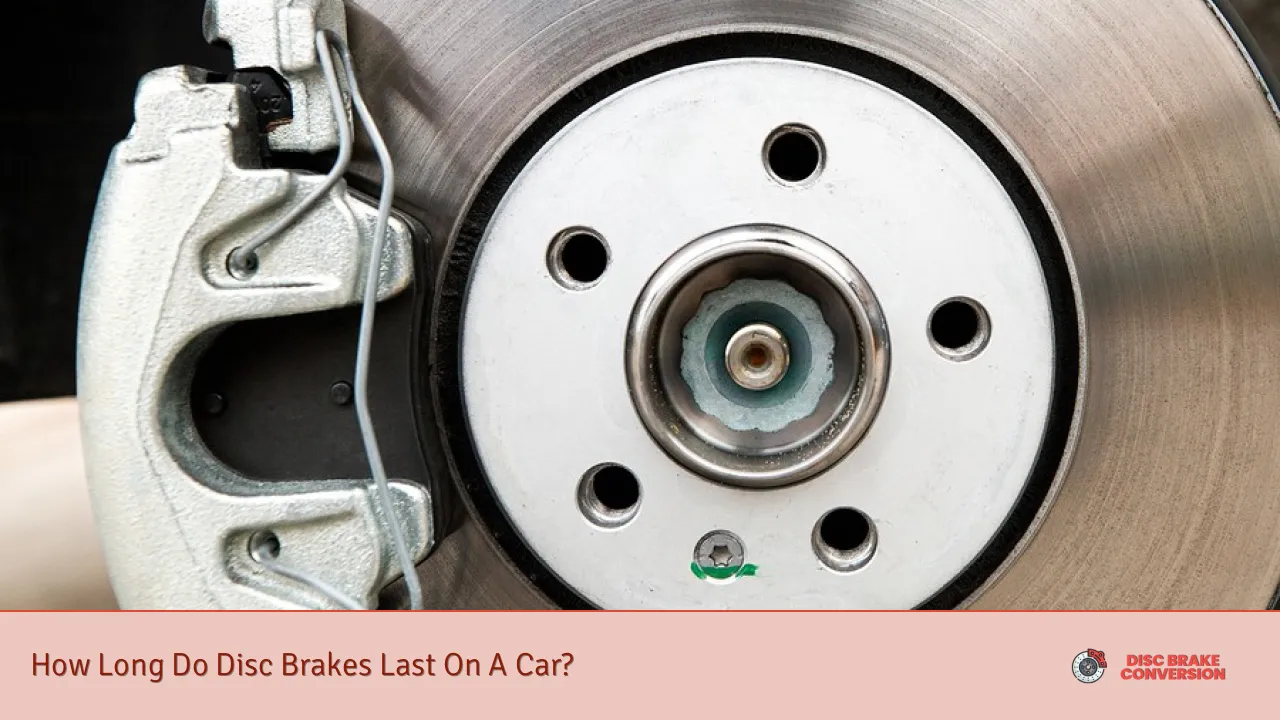Disc brakes are a crucial component of modern vehicles, providing the necessary stopping power to ensure safety on the road. Understanding how long disc brakes last and what factors influence their lifespan can help vehicle owners maintain their braking systems effectively. Typically, the lifespan of disc brakes can range significantly based on various factors including driving habits, vehicle type, and maintenance practices.
On average, properly maintained disc brakes can last anywhere from 50,000 to 120,000 miles. However, without regular maintenance, they may start to deteriorate as early as 25,000 miles. This variability highlights the importance of understanding both the components involved and the practices that can extend their life.
| Factor | Impact on Lifespan |
|---|---|
| Driving Habits | Aggressive driving can reduce lifespan |
| Vehicle Type | Heavier vehicles may wear brakes faster |
| Maintenance | Regular checks can extend lifespan significantly |
Factors Affecting Disc Brake Lifespan
The longevity of disc brakes is influenced by several critical factors:
- Driving Style: Aggressive driving, characterized by rapid acceleration and hard braking, puts more stress on brake components. This can lead to faster wear and tear.
- Vehicle Weight: Heavier vehicles exert more force on brake systems during stops. This increased load can cause faster degradation of brake pads and discs.
- Brake Pad Quality: The type of brake pads used can significantly affect the lifespan of the discs. High-quality pads may be less abrasive and prolong the life of the discs.
- Environmental Conditions: Driving in harsh conditions such as heavy rain or snow can lead to quicker wear due to increased friction and exposure to contaminants.
- Maintenance Practices: Regular inspection and maintenance of brake components are crucial for identifying wear early on and replacing parts before they cause damage to the discs.
Maintaining an awareness of these factors can help car owners take proactive measures to extend the life of their disc brakes.
Signs That Disc Brakes Need Replacement
Recognizing when disc brakes need replacement is essential for safe driving. Here are some common indicators:
- Squeaking or Grinding Noises: These sounds often signal that brake pads are worn down and may be damaging the discs.
- Vibration During Braking: If you feel vibrations in the steering wheel or brake pedal when applying brakes, it could indicate warped discs.
- Reduced Braking Performance: If your vehicle takes longer to stop or feels less responsive when braking, it may be time for a check-up.
- Visible Wear: Inspecting your brake discs for grooves, cracks, or discoloration can provide visual cues about their condition.
Regularly monitoring these signs can prevent further damage and costly repairs.
Maintenance Tips for Prolonging Brake Life
To maximize the lifespan of your disc brakes, consider implementing these essential maintenance tips:
- Regular Inspections: Schedule routine inspections to check for wear on both pads and discs. Early detection of issues can prevent more significant problems later.
- Smooth Driving Habits: Adopt smoother driving techniques by avoiding sudden stops and rapid accelerations. This reduces strain on the braking system.
- Keep Your Vehicle Light: Remove unnecessary items from your vehicle to reduce weight, which in turn decreases strain on your brakes.
- Use Engine Braking: When descending hills or slowing down, use engine braking instead of relying solely on your brakes. This technique helps reduce wear.
- Choose Quality Parts: Invest in high-quality brake pads and discs that are designed for durability. They may cost more upfront but save money in the long run through reduced wear.
By following these tips, you can significantly enhance the longevity of your disc brakes while ensuring optimal performance.
Cost Considerations for Brake Maintenance
Understanding the costs associated with maintaining and replacing disc brakes is essential for budget planning. Here’s a breakdown:
- Brake Pad Replacement Costs: On average, replacing brake pads costs between $100 to $300, depending on the vehicle type and labor costs in your area.
- Disc Replacement Costs: Replacing disc rotors typically ranges from $200 to $400, again varying based on vehicle specifications and labor rates.
- Total Brake System Service Costs: A comprehensive service that includes checking all components may cost between $300 to $800, depending on what needs replacement or repair.
Investing in regular maintenance can prevent more significant expenses down the line by ensuring that pads do not wear down excessively and damage discs.
FAQs About How Long Do Disc Brakes Last On A Car
- How often should I replace my disc brakes?
Disc brakes should typically be replaced every 50,000 to 120,000 miles depending on driving habits. - What affects the lifespan of disc brakes?
Driving style, vehicle weight, brake pad quality, environmental conditions, and maintenance practices all affect lifespan. - How do I know if my disc brakes are worn?
Look for squeaking noises, vibrations during braking, reduced performance, or visible wear on the discs. - Can I extend the life of my disc brakes?
Yes, by adopting smooth driving habits and performing regular maintenance checks. - What is the average cost to replace disc brakes?
The average cost ranges from $200 to $800 depending on whether you are replacing just pads or both pads and rotors.
Maintaining your vehicle’s braking system is vital not only for extending the life of your disc brakes but also for ensuring safety on the road. By understanding how long they last and taking proactive steps in maintenance, you can enjoy safer driving experiences while saving money over time.

